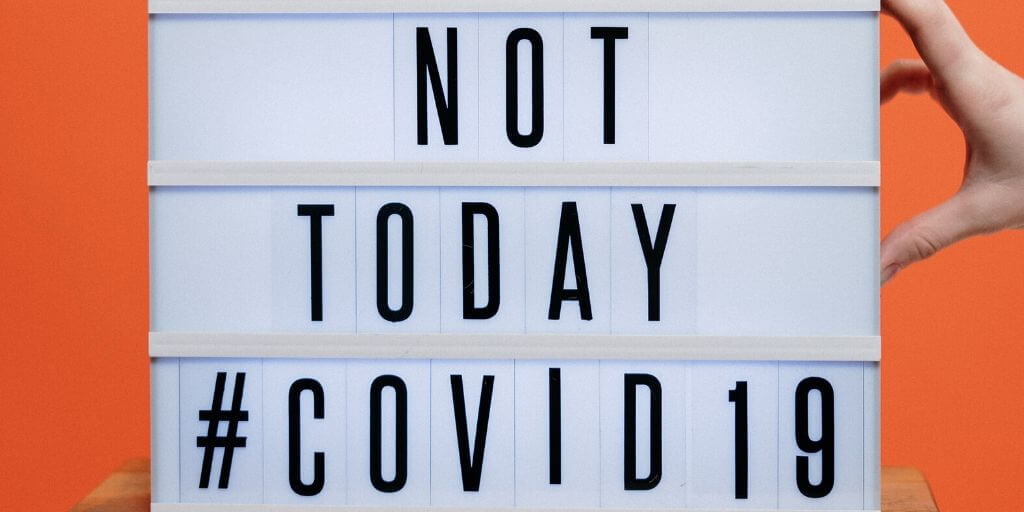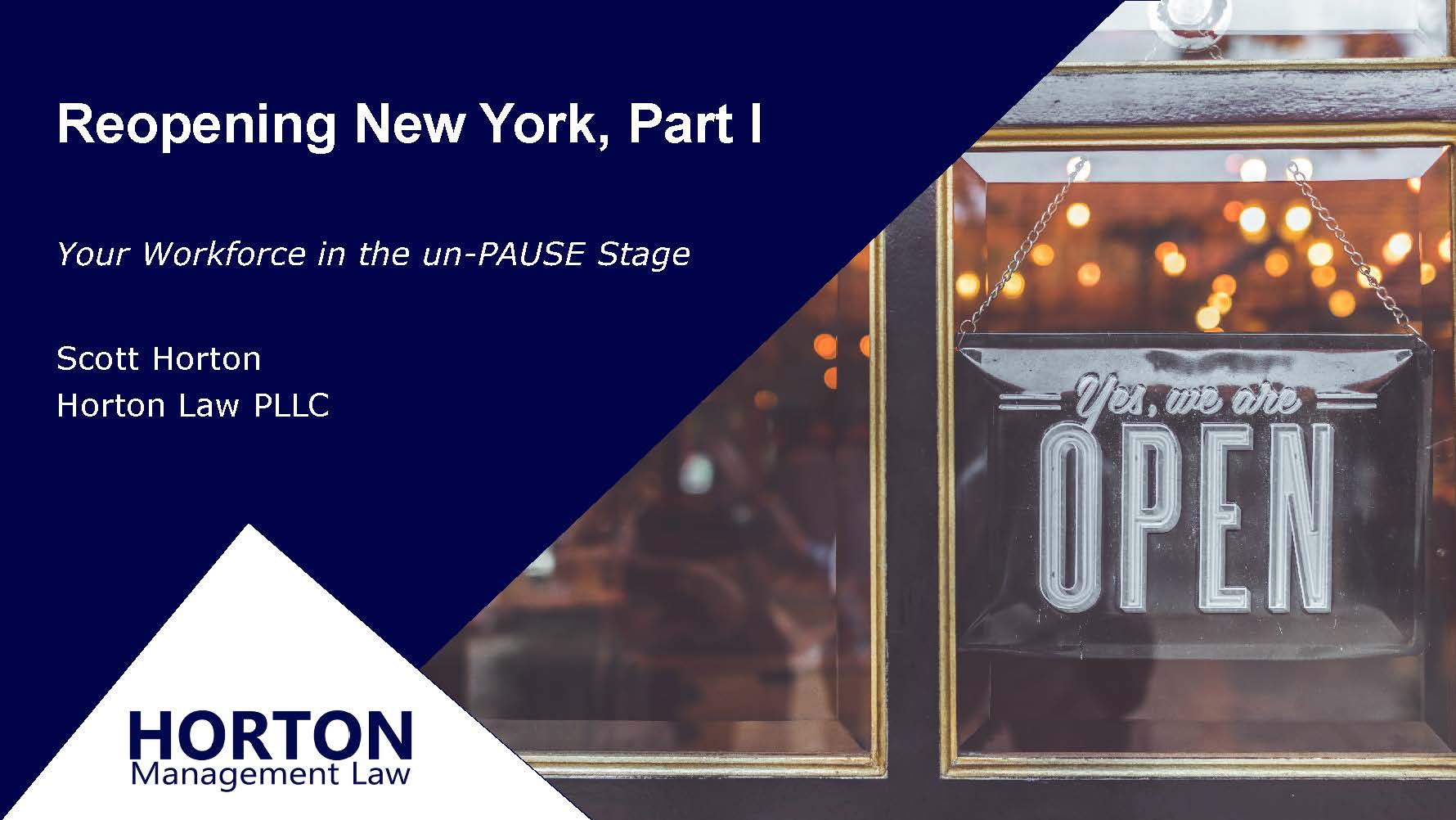The federal government put the individual states in charge of reopening after coronavirus shutdowns. In New York, Governor Andrew Cuomo divided New York into 10 regions and assigned a Control Room to oversee the reopening efforts in each Region. Some of those regions entered Phase 2 of the reopening plan on May 26, 2020. The State issued industry-specific guidelines for the businesses that can open or expand operations in this next phase.
Click here for more information about Phase 1 of New York’s reopening plan.
Phase 2 Industries
Phase 2 includes these businesses:
- Offices
- Real Estate
- Essential and Phase II In-Store Retail
- Vehicle Sales, Leases, and Rentals
- Retail Rental, Repair, and Cleaning
- Commercial Building Management
- Hair Salons and Barbershops
However, the following industries will remain closed in Phase 2:
- Malls; specifically, any indoor common portions of retail shopping malls with 100,000 or more square feet of retail space available for lease; however, any stores located within shopping malls, which have their own external entrances open to the public, separate from the general mall entrance (e.g., strip malls), may open
- Dine-in and on-premise restaurant or bar service, excluding take-out or delivery for off-premise consumption
- Large gatherings/event venues, which include establishments that host concerts, conferences, or other in-person performances or presentations in front of an in-person audience
- Gyms, fitness centers, and exercise classes, except for remote or streaming services
- Video lottery and casino gaming facilities
- Movie theaters, except drive-ins
- Places of public amusement, whether indoors or outdoors, including but not limited to, locations with amusement rides, carnivals, amusement parks, water parks, aquariums, zoos, arcades, fairs, children’s play centers, funplexes, theme parks, bowling alleys, family and children’s attractions
Phase 2 Reopening Guidelines
New York released industry-specific guidance for Phase 2 of the reopening plan on the State’s NY Forward website. The site includes “Summary Guidelines” and “Detailed Guidelines” for each covered industry segment. The documents contain information on how businesses should reopen. Specifically, how to operate in a manner that will minimize the transmission of COVID-19 and adequately protect employees, customers, and vendors from potential exposure. The guidance incorporates CDC and OSHA guidance. The NYS guidelines also set minimum requirements that businesses must implement before reopening. Companies are free to adopt additional health and safety measures to protect people in their offices, stores, and other places of business.
Mandatory Safety Plans
New York has provided a template safety plan that companies can use as a starting point. Upon completion, each business must post its COVID-19 safety plan “conspicuously” in the workplace. Companies don’t have to submit their individual safety plans to any governmental agency, but must make them available if an authorized agency conducts an inspection.
Review of Industry-Specific Guidelines and Affirmation of Receipt
Any business that intends to reopen under Phase 2, or that remained open as an essential business but fits into a Phase 2 industry category, must affirm that it has read and understood the guidelines and will implement them.
Common Phase II Health and Safety Requirements
Although the industry guidelines vary, most contain similar basic requirements. For example, businesses must:
- Provide all workers with an acceptable face covering at no cost to the employees.
- Adhere to hygiene, cleaning, and disinfecting requirements from the CDC and Department of Health.
- Maintain cleaning logs on site that document the date, time, and scope of cleaning.
- Limit occupancy to 50% of building capacity, including employees, customers, and vendors.
- Provide and maintain hand hygiene stations in the office, including handwashing with soap, running warm water, and disposable paper towels, as well as an alcohol-based hand sanitizer containing 60% or more alcohol for areas where handwashing is not feasible.
- Limit occupancy of tightly confined spaces, like elevators, stock rooms, or behind cash registers, to only one person at a time, unless all individuals are wearing face coverings.
- Post social distancing markers using tape or signs that denote 6 ft. of spacing in commonly used and other applicable areas.
- Limit the sharing of objects and discourage touching of shared surfaces.
- Place hand sanitizer throughout the office in convenient locations for use by employees and customers.
- Post signage to remind personnel and customers to adhere to proper hygiene, social distancing, appropriate PPE, and cleaning and disinfecting protocols.
- Maintain a continuous log of workers and visitors who have close contact with other individuals at the worksite or area.
- Implement mandatory health screening and assessment (e.g., questionnaire, temperature check) for employees, contractors, and other visitors, asking about (1) COVID-19 symptoms in past 14 days, (2) positive COVID-19 test in past 14 days, and (3) close contact with confirmed or suspected COVID-19 cases in the past 14 days. Responses must be reviewed and documented daily.
- Have a plan for cleaning, disinfecting, and contact tracing in the event of a positive case.
Top Priorities for Phase 2 Businesses
If your business falls into a Phase 2 industry, you must review the relevant guidance documents. They are available at https://forward.ny.gov/industries-reopening-phase.
Remember, your company must submit the compliance affirmation and prepare and post a written safety plan. To do so, you must evaluate the realities of your operations and modify them accordingly. As the State documents emphasize, these are only the legally-mandated minimum requirements. Government officials may shut you down or take other action if you are not complying. However, satisfying the State’s guidelines does not guarantee that the coronavirus cannot be spread in your facilities. Moreover, it likely will not provide an absolute defense to possible claims by employees or other individuals that your business is unsafe or that the company is responsible for them contracting COVID-19.
The State’s guidelines are not close to normal operations for most businesses. And your company must continue to monitor the latest developments and adapt accordingly. There is currently no timetable for how long these extensive restrictions will remain in place. For example, the start of Phase 2 has not lifted the restrictions on Phase 1 businesses.
Horton Law continues to monitor the evolving requirements for all New York businesses. Sign up for our email newsletter to receive our latest blog posts and announcements of upcoming free webinars on this topic. You can also follow us on LinkedIn for even more frequent updates.


